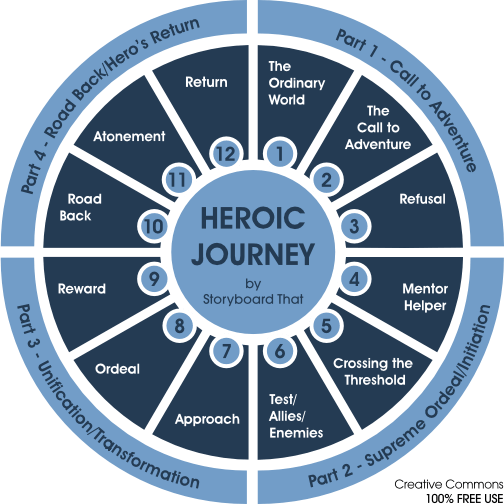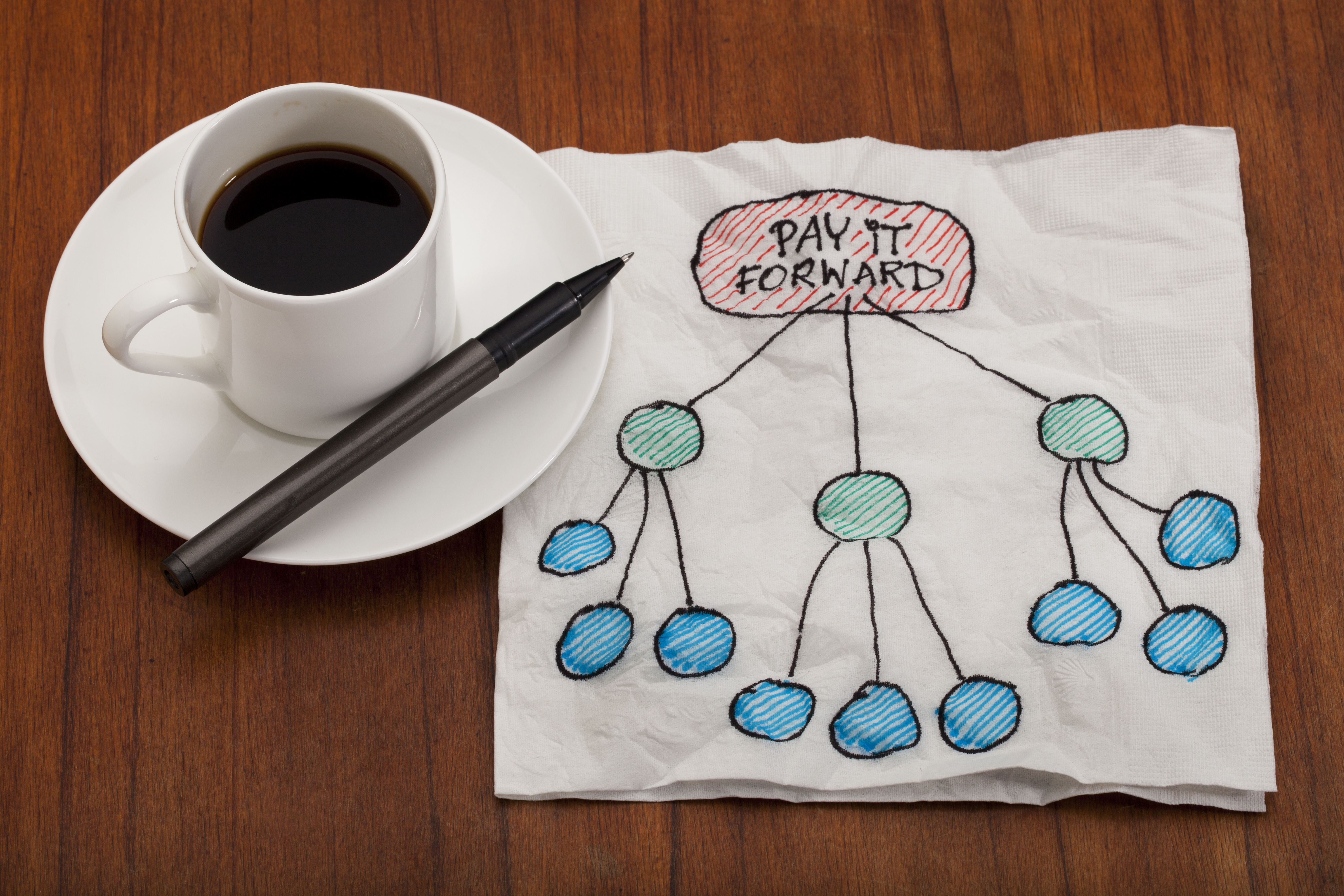Today we’ve got a guest post from our friend Josh Harris from copyeffect.com. Take it away Josh!
Out With the Old, In With the New
Ahh the good ol’ days… Remember when you could do a little keyword research, crank out a ton of micro niche sites, slap in some spun content and some ads and kick back and watch the dough roll in?… Good times.
The fact is, whether we like it or not, those days are gone for good. The Google Panda update laid waste to countless online income streams back in 2011, Penguin in 2012, and the road has only gotten rougher since the recent smack-down on PBNs.
With Google standing in the background with a cattle prod, there has been a massive exodus from niche sites to authority sites, and for good reason. While it’s not impossible to still rank with micro niche sites, you have to put in so much time and effort that you might as well build an authority site and set yourself up for a much larger ROI.

How do you stand out from the crowd?
While building a legitimate authority site will automatically help ensure that you don’t get face-punched by Google and lose all of your hard work overnight, the process does come with its own set of headaches…
One of the biggest obstacles to online success today is standing out from the crowd. To rank an authority site you have to fill it with content that doesn’t suck, and is preferably quite useful and interesting. You’ve got to build relationships with readers, deliver value, capture attention, market yourself without being scammy, and, as we will discuss in this article, use content marketing to “sell without selling”.
Now, is content marketing right for everyone? Of course not. But if your goal is to build a loyal audience that you can make a living off of then it’s a damn good place to start.
Primary Objective- Deliver Value
The internet has disrupted the traditional sales process. Today’s prospective customers are empowered to begin their search for a product or service on their own terms. Not only do they have all of the knowledge in the world at their fingertips, but they also have the powerful networking advantage of social media. They have a TON of options, and if you don’t make a good impression they won’t hesitate to kick you to the curb and move on down the line.
What this means is that in order to be successful in today’s market you’ve got to build relationships with prospects through a process that more resembles dating than traditional selling. Rather than screaming, “Give me your money!”, you draw them in, gently and compassionately. You take it slow, you earn their trust. Content marketing allows you to start the sales process in a way that doesn’t leave the prospect with the feeling they’ve been sold to (icky). Hence, “sell without selling.”
Through effective content marketing you can accomplish the bulk of the sales process by educating people gradually over a period of weeks or months- building rapport and trust long before actually asking them to buy something.
Broken down, the process looks something like this…

1)The reader/customer searches for the solution to a problem they have.
2)They find you, who claim to have the solution. But they don’t know you, and they surely don’t trust you. Yet…
3)Over time you guide them through a process of transformation, be it business or personal, mental or physical. You’re able to do this at scale of course, by producing evergreen content that resonates with your target audience. You’re not afraid to give away awesome info for free, because you know that there is always more you can teach them later, for a price.
The key is to approach this process in such a way that your paid product or services comes as a natural next-step in the journey.
But How?
You’ve Got to Tell a Story
Everybody loves stories. They’re how we, as humans, make sense of the world around us. Without getting too deep, ponder this- Our view of the world is shaped by our past experiences and conditioning, mixed with inputs from our current life experience. Our entire sense of self, or “the ego”, is rooted in an ongoing narrative that constantly runs in the background of the mind.
This narrative, or “our story” is how we define ourselves to ourselves, and we pass along bits of this “story” to others so that they can learn who “we” are.
That’s all well and good, but what does it have to do with my content?
Pretty much everything. See, along with this constant self narrative, we tell ourselves stories about other people too. We tell ourselves stories about people we see on the street, meet at networking events, and contemplate doing business with. They, in turn, tell themselves (often very different) stories about us.
But it doesn’t stop there. We also tell ourselves stories about the products we use, the brands we choose to support, and the services we pay for. And what do all stories need? Heroes and villains!
Our internal dialoge oscillates between oppressor and victim, conqueror of worlds and insecure sheep-person, depending on how the day is going. The key is to harness the power of storytelling- to use your content to resonate with your readers self-narrative. By doing this you can play into their sense of self-importance. You can cast your reader as the hero, and yourself as the mentor who teaches them how to overcome their obstacle.
This is not shady in the least. To help someone you must first get through to them. And what better way to do that then to be aware of how the mind works?
A Common Enemy

For our purposes, the path to a trusting relationship begins with finding a common enemy. Something that you and your prospective customer can ally against.
An effective enemy usually shows up in the form of an ailment, a challenge, a fear, or a thing. It’s whatever is troubling your intended customer. It’s the motivating force that drove them to seek you out in the first place. They have failed thus far to defeat this enemy on their own, and it just so happens that your product or service may be the key to victory.
For the ego to survive and thrive, there must be an “us” and a “them”. You want to make damn sure that your prospect knows that you’re on the same team, unified against the “enemy”. This allows you to focus on solutions without coming across as pushy, or “hard-selling”. You’re not a pushy salesperson, you’re a passionate ally who can lend a helping hand.
A few examples…
- Let’s say you’re a personal trainer or nutritionist, the enemy could rear its ugly head as obesity, disease, low self-esteem, or McDonalds.
- Maybe you’re into personal finance- the enemy could be high-cost mutual funds, expensive mortgages, and lattes.
- Or maybe you’re running an awesome business named CopyEffect (oh wait, that’s us), you’re allied with your readers against shitty content, scammy copywriting, and soul sucking 9-5 jobs.
For this method to be effective, the enemy needs to be pre-existing, because it’s nearly impossible to convince someone that they need to solve a problem that they don’t know they have.
Remember, your goal is to develop a bond with your reader through this common problem, not to dwell on it. Establish the underlying theme in your writing, then focus on providing awesome solutions. Once the reader knows that you’re on the same team you don’t need to constantly remind them. Overdo it and you’ll risk coming across as sleazy or insincere.
How to Tell a Good Story…
For this I will defer to someone much smarter than myself. In The Hero with a Thousand Faces, Joseph Campbell identifies a concept known as ‘The Hero’s Journey’, or ‘monomyth’. It’s the common template of nearly every good story ever told, from The Hobbit to Star Wars, Homer’s Odyssey to the modern bestseller Man 2.0.
No need to reinvent the wheel here, you can follow in the footsteps of the greats and incorporate the hero’s journey into your content marketing. It’s important to note that not all monomythic stories contain every aspect, but the backbone is nearly universal. We call this the ‘monomyth method’.

So, using the awesome wheel diagram above, let’s relate the monomyth to the story of your potential customer….
1- The Ordinary World- Your prospect is still in the ordinary world of their lives. Business as usual.
2- The Call to Adventure- This comes in for form of an unfulfilled desire, or unsolved problem.
3- Refusal of the Call- There is resistance to solving the problem or fulfilling the desire, (too hard, don’t know how, whatever). Then….
4- Mentor- A mentor/ helper appears (in the form of your awesome content) to guide the prospect on their journey. Score!!
So basically…
The reader is Bilbo. You are Gandalf. (sweet beard!)
The story progresses through the steps on the wheel until the return home. At this final stage, your prospect will have already completed the transformation (with the aid of your paid product/service) and will arrive back home, changed for the better.
The beauty of this method is that it’s evergreen. When the story ends, it can instantly can begin all over again, as you, armed with the already established trust, begin the process of leading the prospect through yet another journey of transformation (resulting in another paid product/service).
*Remember, your business is not the hero. The focus has to be on the prospect. They are always the hero, because they are the one going on the journey. No one gives a shit about how great you and your company are, all they care about is what you can do for them. By making the prospect the hero, you (as mentor) also become a hero in their story.
Your business becomes successful BY helping the customer to accomplish their goals. In this way, everybody wins.
The gravy? The bond is strengthened each time the customer re-tells their story, to themselves or someone else, and your business gets to share in the glory of their successes. The monomyth resonates with all of us at a core level, so it only makes sense to leverage this in your marketing strategies. On top of that, telling a good story is a hell of a lot of fun!
Examples
If you’re interested in seeing this process in action, check out the following sites and sign up to their email lists. Although they approach the process from completely different angles, both of these guys do an incredible job of implementing the techniques we’ve been discussing…
Ramit Sethi- Founder of the unpretentiously named company IWillTeachYouToBeRich.com, Ramit is a masterful copywriter and storyteller. He provides massive value to his readers, for free, through his blog and email list, while simultaneously filtering out those individuals who don’t fall into his target audience. His writing draws you in, subtly capturing your attention and leveraging your unconscious desires to do his bidding.
He brilliantly crafts each post and email in a way that strings you along, like a great movie, to the next phase of his sales process. He is selling without selling with every word he writes. The nudges are often gentle, so slight that you wouldn’t notice if you weren’t paying attention. Eventually, he nonchalantly asks you to buy one of his courses, and you probably do, because he has made you a believer.
Mr. Money Mustache- The polar opposite of Ramit, Mr. Money Mustache is a personal finance blogger whose tagline is “Financial Freedom-Through Badassity”. He’s not selling you a product, he’s selling you a way of life. He skillfully utilizes the hero’s journey method in his writing- taking the stance of a humble mentor, someone like you who just so happens to be further down the path.
He has played into the ego’s desire for a common enemy- in his case 40+ year working careers and self-inflicted poverty- to build a massively loyal cult-like fanbase called “mustachians”. In a playful and inspiring manner, he makes it abundantly clear that anyone who has the willingness to change can reap the rewards of his method of badass frugality.
Why This Method Is So Effective
Because everyone wins, and everyone walks away happy. If you go through this process then you will undoubtedly prove your worth to your prospective customer. You will gain their trust and their respect. By giving away so much value for free your prospects will be more than willing to pay you to learn more, when the time comes.

This is called The Law of Reciprocity – which basically states that when someone does something nice for you, you will have a deep-rooted psychological urge to do something nice in return. If you do your job correctly, your customer will have no difficulty breaking out their wallet when the time comes, in fact, they will want to.
Now, understand that this is not sneaky or underhanded voodoo mind-control. You see, although the Law of Reciprocity is hardwired into us, there’s a catch.
People are not stupid (well some are, like that lady that cut you off in traffic yesterday, but most aren’t). If the law is exploited, it loses it’s power. And your true intentions become quite obvious.
Exploiting the law means using it as a tactic, or front. For example, pretending to be honest and sincere only to trick someone into feeling a sense of obligation to a future sales pitch. People can smell this BS from a mile away, and will shut you down the moment you start screaming “After all I’ve done for you!!!”
So what’s a guy or gal to do? Well, the answer is quite simple.
Be sincere and actually care about people.
Not only will this make it easier to build relationships, but it will make the entire process much more rewarding and fun.
Key Takeaways
- Utilizing the Monomyth Method helps you to remember your place in the process. As the authority, your job is to be a wise mentor, detached but not aloof, in the action but above the fray. You want to avoid being bossy and conceited. You remember that you only succeed when your prospect succeeds, therefore your primary concern should be guiding them to success through your content.
- Always focus your content on the customer/reader. Anything that doesn’t help them achieve their goals or aid them on their personal journey is fluff, and should be eliminated.
- Be authentic. Being able to help others transform their lives for the better is a wonderful feeling. Embrace the abundance mentality. Give freely, go the extra mile, accept constructive criticism. Do these things and you will always find a seat at the table.
This process takes work! It’s not for half-hearted, self-obsessed folks who are just looking for a quick buck. The path is rocky at times, but rest assured, following the guidelines in this article will set you miles ahead of the competition, not only in content, but business in general.
In a world busting at the seams with bullshit, people crave authenticity, they want someone to trust. By going the extra mile you can build a following that will last for a lifetime- one that no penguin, or panda, or muskrat, or koala can destroy.
What strategies do you use to connect with your readers and build lasting relationships? Please share a tip or a question in the comments section below.
If you enjoyed this article and want to learn more about creating killer content, sign up for the CopyEffect newsletter!
P.S. If you have a second and are feeling all warm and fuzzy, please share this article with your friends on social media. Thank you :-)
Steve says:
Timely article Josh. I’m trying to build a list giving something away for free. Building that sense of trust is something that just doesn’t come naturally (at least on the internet). Thanks for the ideas.
Josh Harris says:
Thanks Steve! Best of luck to you!
eBizGuide says:
Not advertising a product, but showing “how it works”. This way can make sales. Positive case studies, positive testimonials and positive screenshots always work for closing.